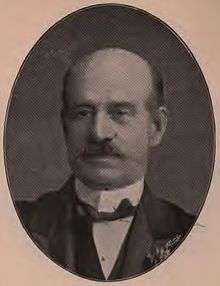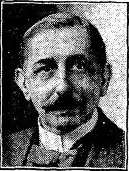Penryn and Falmouth was the name of a constituency in Cornwall, England, UK, represented in the House of Commons of the Parliament of the United Kingdom from 1832 until 1950. From 1832 to 1918 it was a parliamentary borough, initially returning two Members of Parliament (MPs), elected by the bloc vote system. Under the Redistribution of Seats Act 1885, its representation was reduced to one member, elected by the first past the post system. In 1918 the borough was abolished and the name was transferred to a county constituency electing one MP.
Boundaries
1918-1950: The Municipal Boroughs of Falmouth, Penryn, and Truro, the Urban District of St Austell, and parts of the Rural Districts of East Kerrier, Truro, and St Austell.
History
The constituency was created by the Reform Act 1832 (the "Great Reform Act") as a replacement for the Penryn constituency, which had become a notoriously rotten borough. The new borough consisted of Penryn, Falmouth and parts of Budock and St Gluvias parishes, giving it a mostly urban population of nearly 12,000, of whom 875 were registered to vote at its first election in 1832.
Initially Penryn and Falmouth elected two MPs, but this was reduced to one in 1885, and it was one of the smallest constituencies in England for the next thirty years. At this period it was politically unpredictable - though generally one of the more Conservative Cornish constituencies, it was susceptible to influence by personal factors and often swung against the national tide of opinion. Falmouth, which had a stronger non-conformist presence, was the more Liberal part of the constituency in the late 19th century, but was thought to become more Conservative as it developed its trade as a seaside resort.
In 1918 the borough was abolished, but the Penryn and Falmouth name was applied to the county constituency in which the two towns were now placed. This was a much more extensive constituency covering the whole of south central Cornwall, including also the towns of Truro and St Austell as well a long stretch of coastline. This gave it a more industrial character (a sixth of the population were engaged in tin-mining); the area suffered badly from unemployment in the 1930s, and the Labour Party came within 3,031 votes of winning what would have been their first seat in Cornwall in 1935.
The constituency was abolished for the 1950 general election, most of its area being moved into the Truro constituency, but Penryn and Falmouth themselves joining the new Falmouth and Camborne division.
Members of Parliament
Penryn & Falmouth borough 1832-1885
Penryn & Falmouth borough 1885-1918
Penryn & Falmouth division of Cornwall 1918–1950
Elections
Elections in the 1880s
Elections in the 1890s

F.J.Horniman
Elections in the 1900s

John Barker
Elections in the 1910s
General Election 1914/15:
Another General Election was required to take place before the end of 1915. The political parties had been making preparations for an election to take place and by the July 1914, the following candidates had been selected;
Elections in the 1920s

T. Walters
Elections in the 1930s
A General election was due to take place before the end of 1940, but was postponed due to the Second World War. By 1939, the following candidates had been selected to contest this constituency;
Elections in the 1940s
References
- ↑ E J Hutchins was subsequently elected for Lymington 1850-1857. There is a biography of him at Masonic Province of South Wales, Eastern Division.
- ↑ See ODNB article by Richard Davenport-Hines, ‘Gurney, Samuel (1816–1882)’, Oxford Dictionary of National Biography, Oxford University Press, 2004 accessed 23 Jan 2008
- ↑ Hansard website gives dates of George Pilcher, MP as 1882 – 8 December 1962, in Parliament 29 October 1924 – 30 May 1929. The National Portrait Gallery, London has two photographic portraits of him, taken in 1927. He is described as journalist, barrister and politician. Rayment says he was born 26 February 1882. He was Secretary of the Royal Empire Society. The Times, 16 March 1935; pg. 9; Issue 47014; col D Notes his resignation as Secretary of the RES, after six years' service and his previous work as a journalist. The Times, 13 December 1962; pg. 12; Issue 55573; col E includes an Obituary, giving further information.
- ↑ "Penryn And Falmouth". The Cornishman (90). 1 April 1880. p. 5.
- ↑ British parliamentary election results, 1885-1918 (Craig)
- ↑ British parliamentary election results, 1885-1918 (Craig)
- ↑ British parliamentary election results, 1885-1918 (Craig)
- ↑ British parliamentary election results, 1885-1918 (Craig)
- ↑ British parliamentary election results, 1885-1918 (Craig)
- ↑ British parliamentary election results, 1885-1918 (Craig)
- ↑ British parliamentary election results, 1885-1918 (Craig)
- ↑ British parliamentary election results, 1885-1918 (Craig)
- ↑ British Parliamentary Election Results 1918-1949 by FWS Craig
- ↑ British Parliamentary Election Results 1918-1949 by FWS Craig
- ↑ British Parliamentary Election Results 1918-1949 by FWS Craig
- ↑ British Parliamentary Election Results 1918-1949 by FWS Craig
- ↑ British Parliamentary Election Results 1918-1949 by FWS Craig
- ↑ British Parliamentary Election Results 1918-1949 by FWS Craig
- ↑ British Parliamentary Election Results 1918-1949 by FWS Craig
- ↑ British Parliamentary Election Results 1918-1949 by FWS Craig
Sources
- Michael Kinnear, The British Voter (London: BH Batsford, Ltd, 1968)
- Henry Pelling, Social Geography of British Elections 1885-1910 (London: Macmillan, 1967)
- J Holladay Philbin, Parliamentary Representation 1832 - England and Wales (New Haven: Yale University Press, 1965)
- Frederic A Youngs, jr, Guide to the Local Administrative Units of England, Vol I (London: Royal Historical Society, 1979)
- Leigh Rayment's Historical List of MPs – Constituencies beginning with "P" (part 1)


